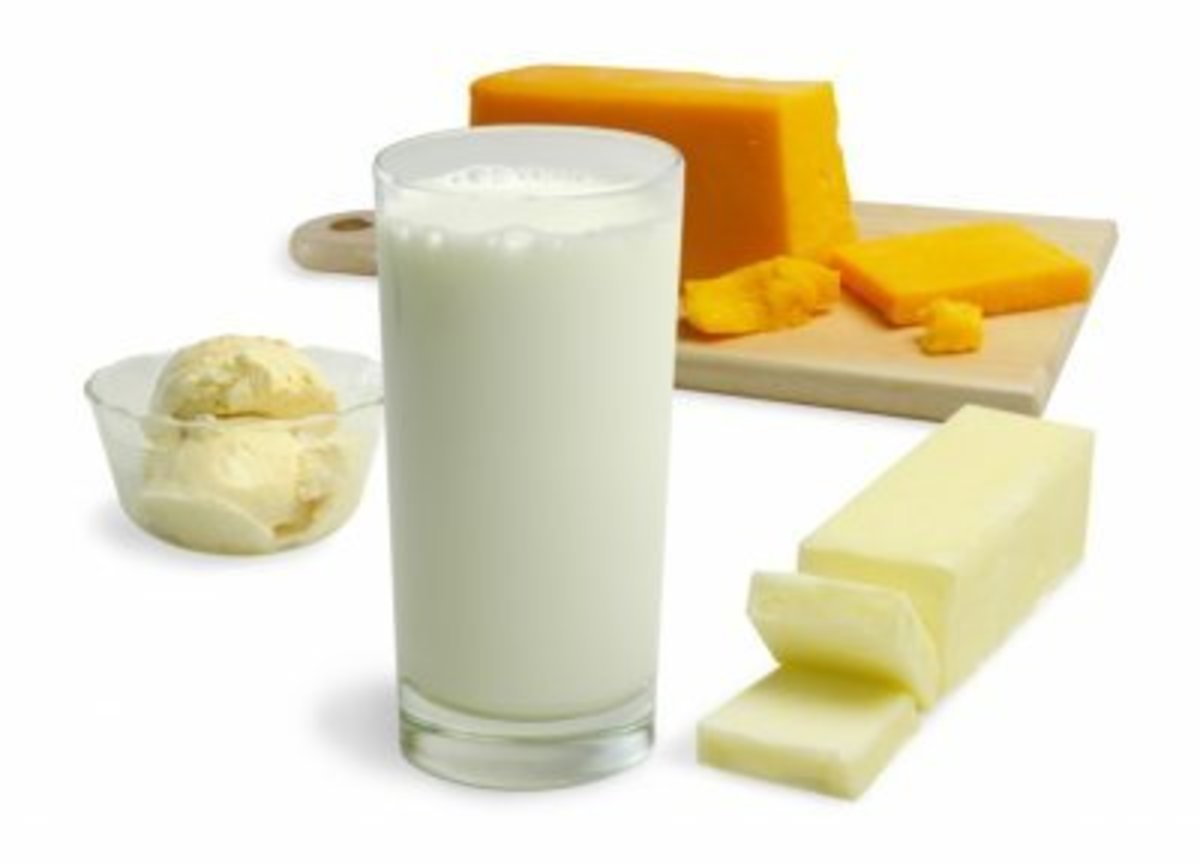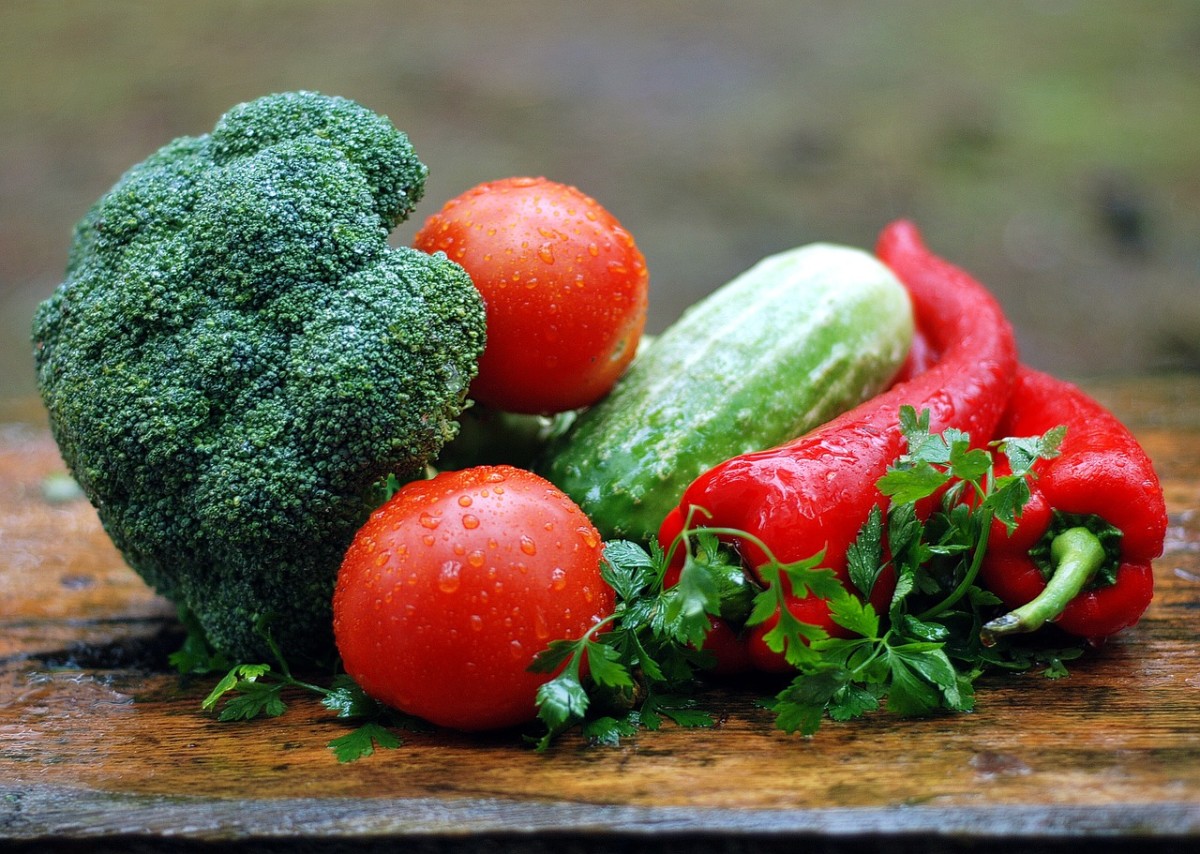- HubPages»
- Food and Cooking»
- Food Safety»
- Food Allergies
Milk Allergy

Basic Guidelines
Milk is a common allergen in infants and young children. A true allergy to milk occurs when the body reacts to any of the proteins found in milk. Both milk proteins, casein and whey, may cause an allergic reaction. Symptoms of milk allergy include nausea, vomiting, abdominal pain, diarrhea, nasal congestion, hives, and rash.
Once allergic to milk, all foods that contain cow's milk must be eliminated from the diet. As cow's milk proteins are used in many foods, reading all labels very carefully is important. Become knowledgeable in identifying terms that may reveal hidden sources of milk protein. Milk ingredients are often found in baked products, baking mixes, battered foods, beverages, breads, candies, cheese, chocolate products, creamed foods, custards and puddings, desserts, diet foods, fat substitutes, gravies, salad dressings, and sauces, ice cream products and sherbets, imitation dairy products, margarines and spreads, nondairy creamers and whipped toppings, noodle dinners, potato mixes and whipped potatoes, snack foods, soups, and vegetarian cheese. Kosher foods and vegan foods are milk-free and can be identified by specific markings on the label. The words "pareve" or "parve" indicate the product is milk free.
If eliminating milk and cow's milk containing products from the diet, it is very important to choose substitute foods that provide the primary nutrients that they normally provide. These nutrients are calcium, vitamin A, vitamin D, riboflavin, pantothenic acid, and phosphorous. Other sources of protein may also need to be provided if milk and milk products are a major source of dietary protein. Diets of milk allergic children should be monitored for nutritional adequacy by consulting your physician and/or dietitian.
Minimizing milk allergies in children
When children are born, their intestinal tracts may be immature. Introducing foods known to be common allergens in children at this time can produce an allergy. It is thought that the food passes across the intestinal tract not fully digested, setting off an attack by the immune system producing an allergic reaction. A few simple steps may help avoid this chain of events.
Strategies to Avoid Cow Milk Allergies in Children:
- Breastfeed, it may help decrease the chance of food allergies
- Introduce low allergenic solid foods at 4-6 months of age
- Introduce cow's milk no earlier than 9-12 months of age
Label Reading
In addition to the obvious sources of milk in your diet, if you have been diagnosed with a milk allergy avoiding milk containing products will be very important. The milk proteins casein and whey are used commonly in many foods. Careful reading of labels and ingredient lists on food packages is the best way to avoid this allergen.
Review the list of common foods and ingredients containing milk protein and help take the guess work out of label reading. Keep this list handy, you never know when you will need to read a food label.
Even with familiar brands, it is very important to read all labels carefully prior to buying or eating a food. Food manufacturers frequently change suppliers and ingredients. It is equally important to read labels when changing brands. Different brands of the same type of food may contain different ingredients.
Common Foods and Ingredients Containing Milk Protein:
Fluid Milks
- buttermilk
- cultured milk
- acidophilus milk
- skim milk
- whole milk
- reduced fat milk
- 1% milk
- 2% milk
- low fat milk
- nonfat milk
- fat free milk
- malted milk
Dry Milks and Dry Milk Ingredients
- buttermilk solids
- nonfat milk solids
- milk solid pastes
- powdered milk
- skim milk powder
- yogurt powder
- milk protein dry milk solids
- milk fat
- milk powder milk solid
Canned Milks
- sweetened condensed milk
- condensed milk
- evaporated milk
Cheese
- cheese food
- cheese flavor
- all types of cheese
Cream
- ghee
- curds
- custard
- half & half
- whipped cream
Butter
- butter
- butter fat
- butter solids
- artificial butter
- whipped butter
- butter flavored oil
- artificial butter flavor
Casein and Caseinates
- ammonium caseinate
- potassium caseinate
- sodium caseinate
- calcium caseinate
- magnesium caseinate
Hydrosylates
- whey hydrolysate
- whey protein hydrolysate
- casein hydrolysate
- milk protein hydrolysate
Whey and Whey Ingredients
- sweet dairy whey
- demineralized whey
- whey concentrate
- hydrolyzed whey
- whey
- acid whey
- cured whey
- powdered whey
- whey protein
- whey powder
- whey solids
- delactosed whey
Foods That May Contain Milk
- spices
- caramel flavoring
- caramel color
- high protein flavor
- high protein flour
- natural flavoring
Other
- sherbet
- pudding
- ice milk
- ice cream
- rennet
- yogurt
- sour cream
- frozen yogurt
- casein
- lactalbumin
- lactalbumin phosphate
- imitation sour cream
Substitutions
Substituting soy or rice milk in place of cow's milk is remarkably straightforward. Watch for the increased sweetness from the rice milk which can be balanced by reducing the sugar in baked goods or adding more bitter or astringent vegetables to stews and soups.
It is necessary to add some starch when replacing cream or evaporated milk in a soup or sauce and you will find proportions and advice rather than a lot of recipes in this area. Cookbooks and recipe resources provide a wealth of information about ingredients and their function in foods. Ethnic cookbooks commonly offer tasty recipes where the product is not compromised by a food allergy, as traditional ethnic foods are often low in allergenic foods.
Even if recommended in a cookbook, remember to read the ingredient list of all foods, especially your condiment and spice mixtures. Identify the foods that will be the most difficult for you to give up, the ones that makeup the bulk of your daily diet, and focus on replacing these first with yummy new alternatives.
Milk-Free Substitutions
- Rice milk
- Soy milk
- Soy cheese
- Soy yogurt
- Nut Milks
- Tofu
- Vegetable shortening
- Oils
Not all substitutions are appropriate. Depending on the recipe and desired flavor, ingredients can be chosen that would enhance the food product.
Ingredient Considerations
Ingredients
| Comments
|
|---|---|
Soy cheese
| These have improved a lot in the past few years but they still do not melt like cow or goat's milk cheeses
|
Nut milks
| Blanch the nuts and remove the skins. Grind with a little sugar in a mortar and pestle or a food processor. Combine with 2-3 times the amount of cold water and refrigerate for several hours. Strain through cheesecloth before using.
|
Vegetable shortening
| This is very high in saturated fat but will make a flakier pie dough than oil alone.
|
Oils
| Use the heavier oils like pure olive oil (not extra virgin) when necessary for frying. Pie dough made with oil rather than shortening will be sand like in texture, not flaky. This works perfectly well for a "pressed " pie dough rather than a rolled shell.
|








